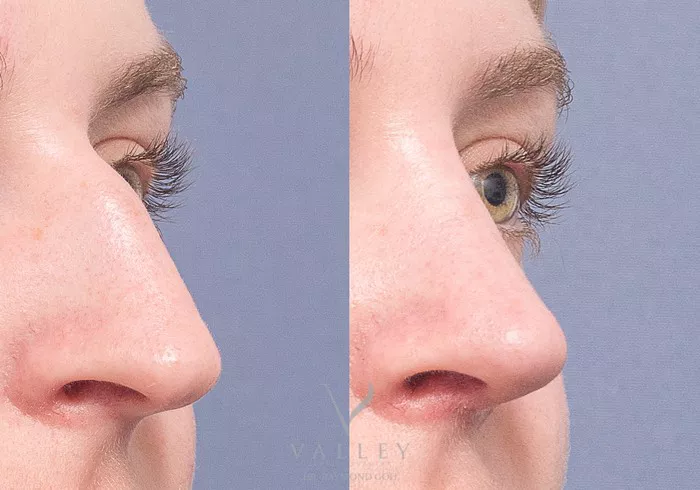Rhinoplasty, also known as nose surgery, is a cosmetic procedure that is performed to improve the appearance of the nose. The procedure can be used to change the size, shape, or angle of the nose, as well as to correct breathing problems. In this article, we’ll explore what your nose might look like after rhinoplasty and what you can expect from the results of the procedure.
Understanding Rhinoplasty
Rhinoplasty is a surgical procedure that is performed to reshape the nose. The procedure can be used to correct a variety of cosmetic and functional issues, including:
Size: Rhinoplasty can be used to reduce or increase the size of the nose, depending on the patient’s preferences.
Shape: Rhinoplasty can be used to change the shape of the nose, such as reducing a hump on the bridge of the nose or changing the shape of the tip.
Angle: Rhinoplasty can be used to change the angle between the nose and the upper lip, which can improve the appearance of the nose and the overall facial balance.
Breathing Problems: Rhinoplasty can be used to correct breathing problems, such as a deviated septum or other structural abnormalities that can affect breathing.
What to Expect After Rhinoplasty
After rhinoplasty, it is normal to experience some swelling and bruising around the nose and eyes. This can make it difficult to see the final results of the procedure immediately after surgery. However, over time, the swelling and bruising will subside, and you will be able to see the final results of the procedure.
The amount of swelling and bruising that you experience will depend on several factors, including the extent of the surgery, your individual healing process, and the techniques used by your surgeon. In general, most patients experience some swelling and bruising for the first few days after surgery, with the swelling gradually improving over the next several weeks.
What Your Nose Might Look Like After Rhinoplasty
The final results of rhinoplasty can vary depending on several factors, including the extent of the surgery, the techniques used by your surgeon, and your individual healing process. However, in general, you can expect your nose to look different after rhinoplasty.
Here are some common changes that you might notice after rhinoplasty:
Improved Symmetry: Rhinoplasty can be used to improve the symmetry of the nose, which can create a more balanced and aesthetically pleasing appearance.
Reduced Size: Rhinoplasty can be used to reduce the size of the nose, which can create a more proportionate appearance.
Changed Shape: Rhinoplasty can be used to change the shape of the nose, such as reducing a hump on the bridge of the nose or changing the shape of the tip.
Improved Breathing: Rhinoplasty can be used to correct breathing problems, which can improve the overall function of the nose.
Improved Facial Balance: Rhinoplasty can be used to improve the overall facial balance, which can create a more harmonious appearance.
It is important to remember that the final results of rhinoplasty may not be apparent immediately after surgery. It can take several months for the swelling to fully subside and for the final results of the procedure to be visible.
Risks and Complications of Rhinoplasty
Like any surgical procedure, rhinoplasty carries some risks and potential complications. Some of the most common risks and complications associated with rhinoplasty include:
Infection: There is a risk of infection after any surgical procedure, including rhinoplasty.
Bleeding: Some bleeding is normal after rhinoplasty, but excessive bleeding can be a sign of a complication.
Scarring: While most incisions for rhinoplasty are made inside the nose, there is still a risk of visible scarring.
Breathing Problems: In some cases, rhinoplasty can lead to breathing problems, particularly if the procedure was performed to correct a deviated septum or other structural abnormalities.
Unsatisfactory Results: While most patients are happy with the results of their rhinoplasty, there is a risk of unsatisfactory results, particularly if the patient has unrealistic expectations or if the procedure was performed by an inexperienced surgeon.
Conclusion
Rhinoplasty can be a highly effective way to improve the appearance of the nose and correct breathing problems. While there are some risks and potential complications associated with the procedure, most patients are happy with the results of their rhinoplasty.
If you are considering rhinoplasty, it is important to choose an experienced and qualified surgeon who can help you achieve your desired results. By understanding what to expect after rhinoplasty and the potential risks and complications associated with the procedure, you can make an informed decision about whether rhinoplasty is right for you.

